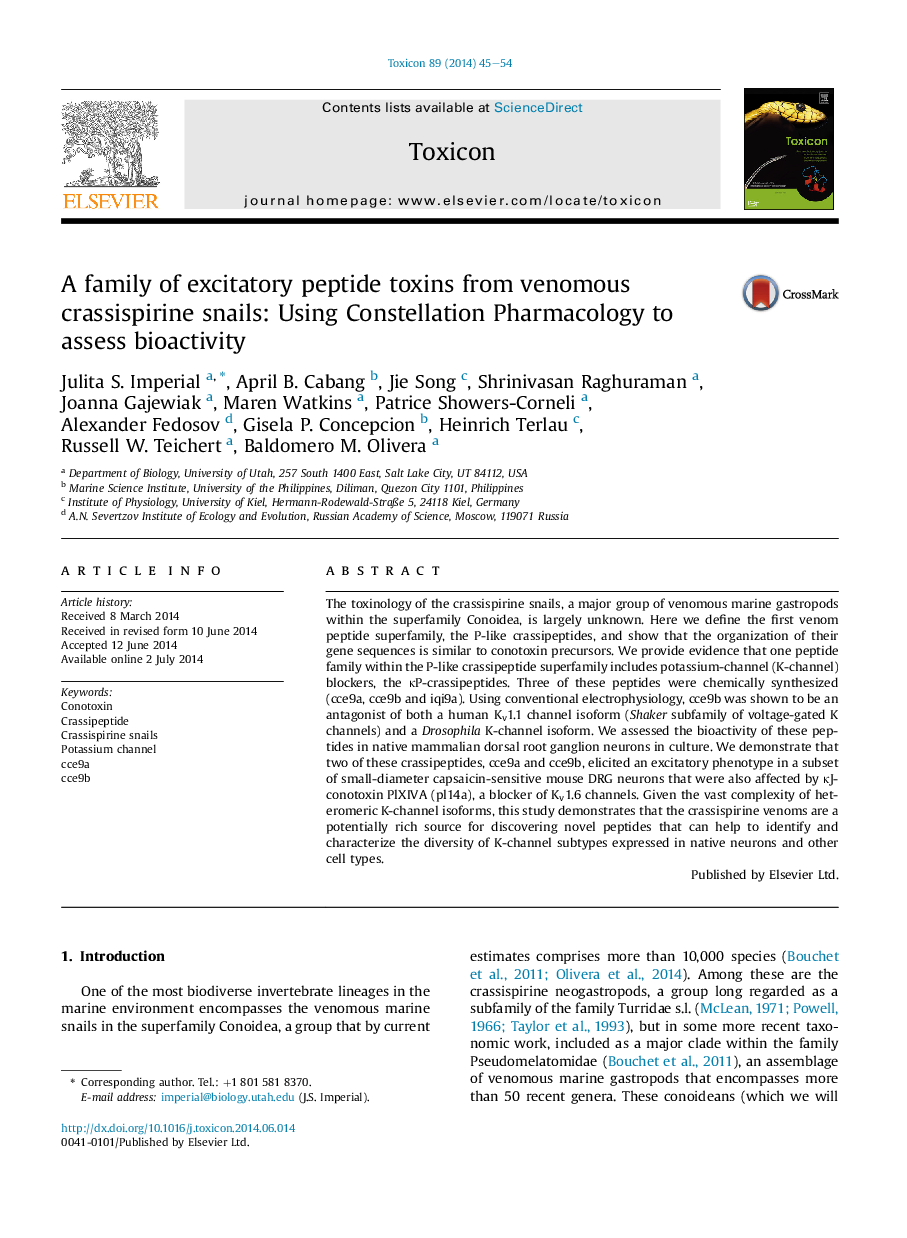| Article ID | Journal | Published Year | Pages | File Type |
|---|---|---|---|---|
| 2064642 | Toxicon | 2014 | 10 Pages |
•Venom peptides from marine molluscs now extend from conotoxins to crassipeptides.•This paper defines the first crassipeptide superfamily, the P-like crassipeptides.•Three P-like crassipeptides were synthesized and characterized.•The bioactivity of the characterized peptides suggests they are K channel blockers.
The toxinology of the crassispirine snails, a major group of venomous marine gastropods within the superfamily Conoidea, is largely unknown. Here we define the first venom peptide superfamily, the P-like crassipeptides, and show that the organization of their gene sequences is similar to conotoxin precursors. We provide evidence that one peptide family within the P-like crassipeptide superfamily includes potassium-channel (K-channel) blockers, the κP-crassipeptides. Three of these peptides were chemically synthesized (cce9a, cce9b and iqi9a). Using conventional electrophysiology, cce9b was shown to be an antagonist of both a human Kv1.1 channel isoform (Shaker subfamily of voltage-gated K channels) and a Drosophila K-channel isoform. We assessed the bioactivity of these peptides in native mammalian dorsal root ganglion neurons in culture. We demonstrate that two of these crassipeptides, cce9a and cce9b, elicited an excitatory phenotype in a subset of small-diameter capsaicin-sensitive mouse DRG neurons that were also affected by κJ-conotoxin PlXIVA (pl14a), a blocker of Kv1.6 channels. Given the vast complexity of heteromeric K-channel isoforms, this study demonstrates that the crassispirine venoms are a potentially rich source for discovering novel peptides that can help to identify and characterize the diversity of K-channel subtypes expressed in native neurons and other cell types.
